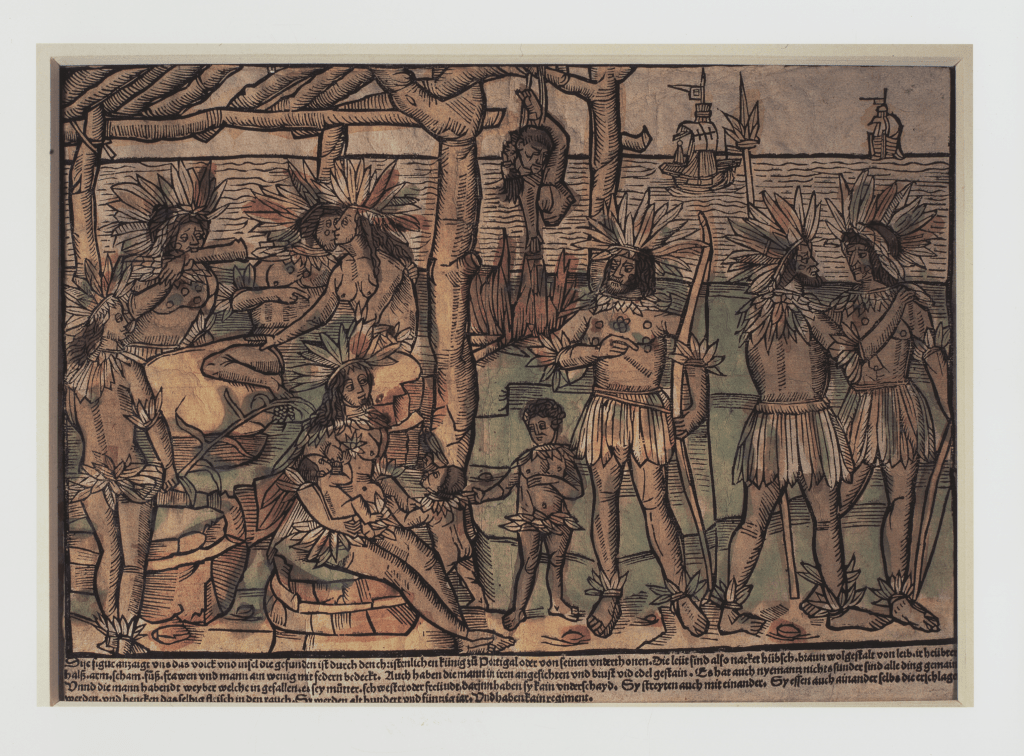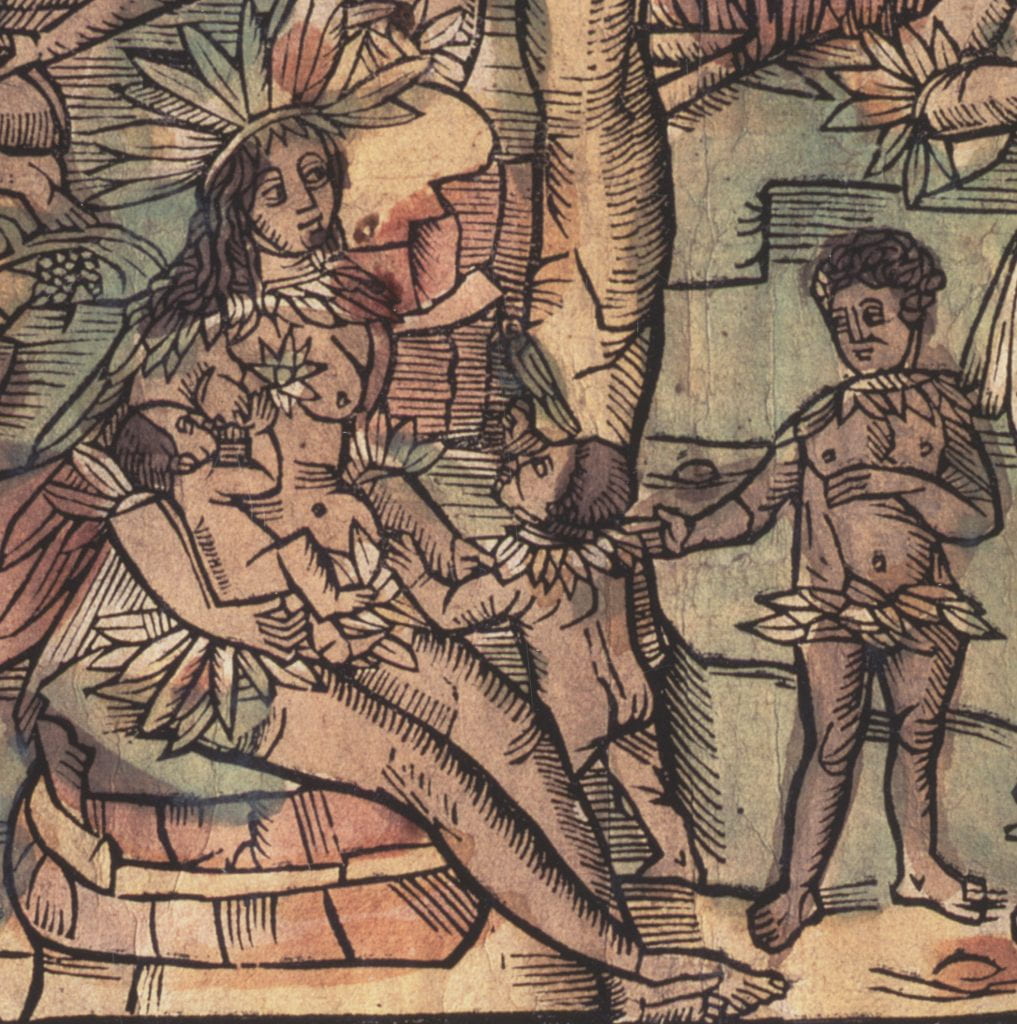Figure 6.2. Johann Froschauer, Woodcut of South American Indians
[Augsburg Broadside], 1505. The New York Public Library.
This broadside shows a scene—presented as if the artist were the eyewitness observer—dramatizing the lifeways of peoples living across an ocean. Cannibalism is presented as a fact of daily life. The broadside has four lines of text printed in German in black gothic type, and the English translation reads:
“This figure represents to us the people and island, which have been discovered by the Christian King of Portugal or by his subjects. The people are thus naked, handsome, brown, well shaped in body, their heads, necks, arms, private parts, feet of men and women are a little covered with feathers. The men also have many precious stones in their faces and breasts. No one also has anything, but all things are in common. And the men have as wives those who please them, be they mothers, sisters, or friends, therein make they no distinction. They also fight with each other. They also eat each other even those who are slain, and hang the flesh of them in the smoke. They become a hundred and fifty years old. And have no government.” From Stevens’s American Bibliographer, 8.
Broadsides (or broadsheets) were single sheets, printed from woodblocks, with an image and a few lines of text. Dürer’s famous woodcut of the rhinoceros (1515) resembles in size the Augsburg Broadside in size and in its use of image and text, see the copy at the British Museum here. Dürer’s broadsheet includes the animal and lines of text above it. Just as Dürer’s text and image spread the news of the rhino, so too did Froschauer’s broadside publicize news about previously unknown peoples living in newly discovered lands. In Froschauer’s case, however, the broadside’s map-like qualities–the coastline, ocean, ship off shore–as well as the text situated cannibalism in lands discovered by the Portuguese. It disseminated cannibalism as a defining feature of these lands. Although Brazil is not named, the prominent feathers and the parrot hidden in the image, point to South America. The parrot is held by the child, see below.

